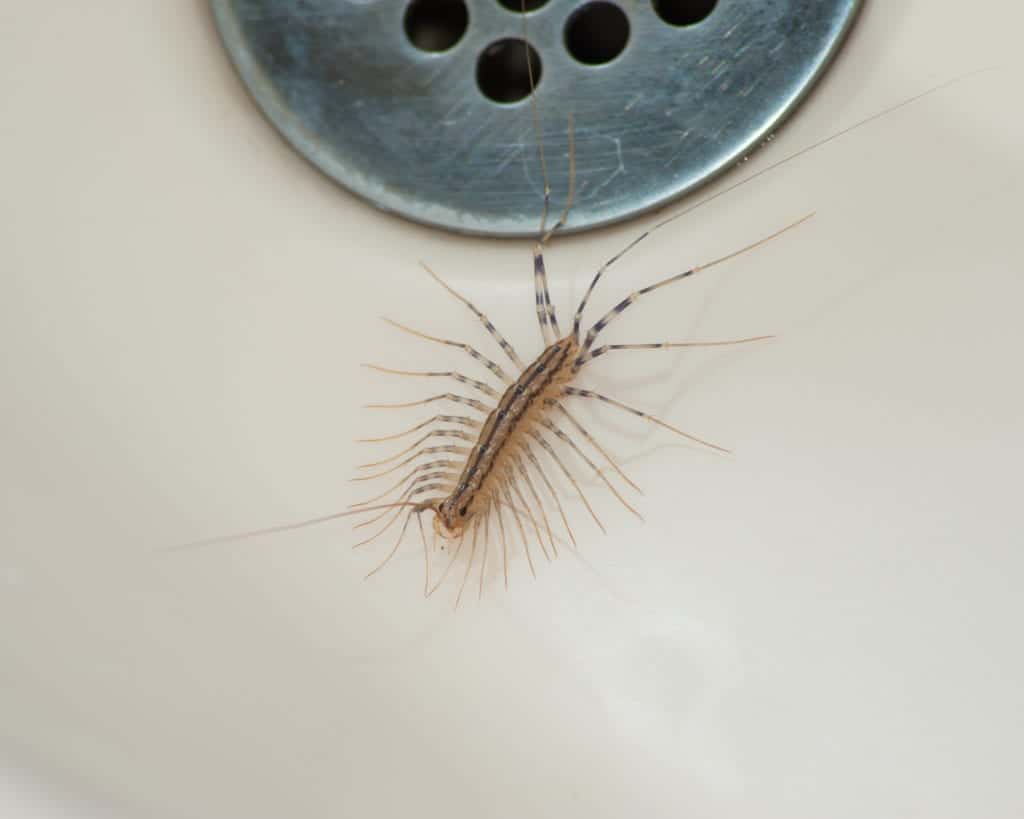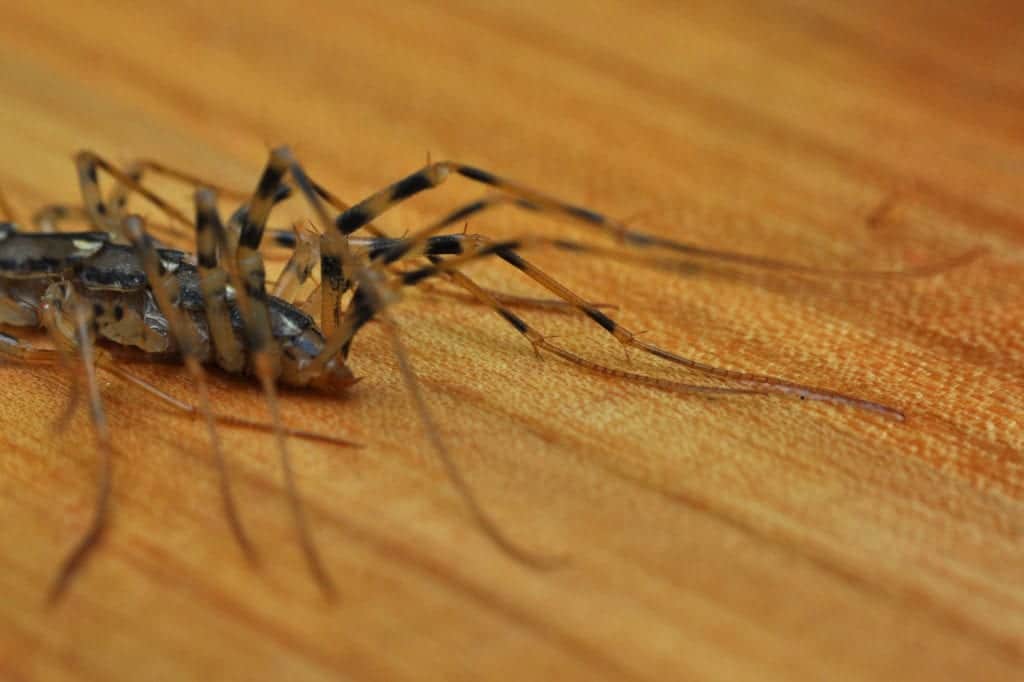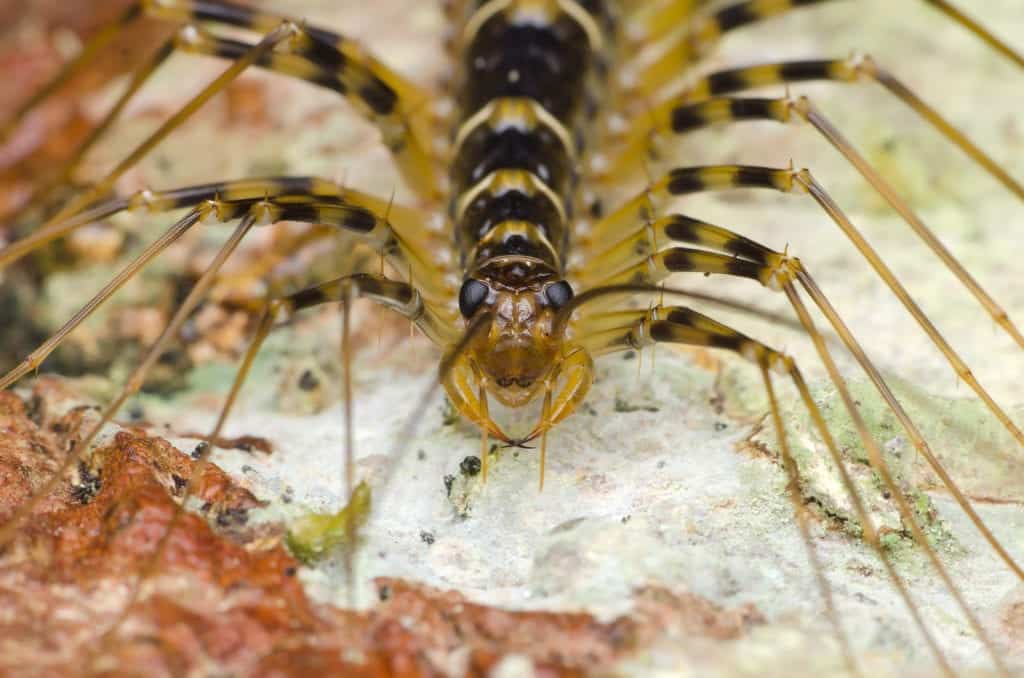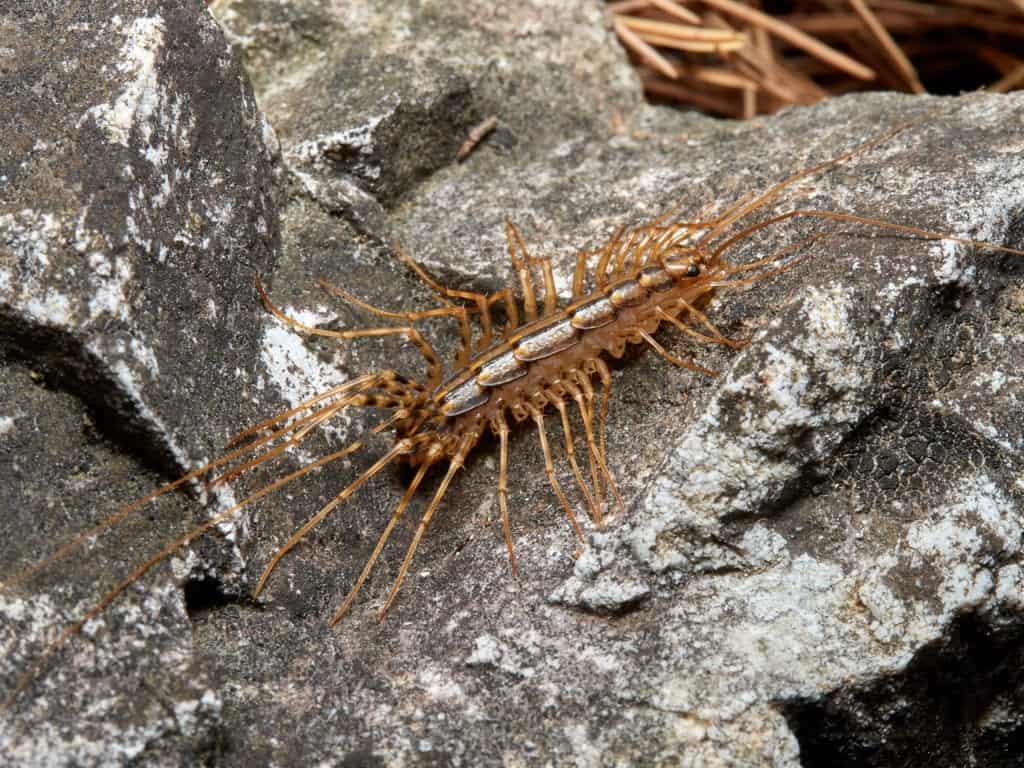House Centipedes: The Multilegged Monsters of Chicago
House Centipedes: The Multilegged Monsters of Chicago
What are These Creepy Crawlies?
Also known as Spider-pedes, these nasty creatures are Arthropods in the Myriapoda subphylum. This subphylum consists of over 13,000 different terrestrial species and the term is of Latin origin, meaning “having many legs.” These creatures are invertebrates with segmented body parts and between ten to several hundred legs depending on the specific species. Counter to what their name may suggest, centipedes do not actually have 100 legs. While the range of legs on centipedes can vary drastically based on the suborder of the species, no centipede actually has exactly 100 legs. The average ranges from 30 to 50 legs, while the highest recorded for house centipedes is 354 legs (177 pairs). 
How do I Know I Have House Centipedes vs. Other Centipedes?
On average, house centipedes are a yellowish/brown color with darker stripes and markings. They range from 1/8 of an inch in adolescence to up to six inches long. Their elongated, worm-like bodies are surrounded by long spindly, spider-esque legs and a pair of hairy antennae. Just as every other arthropod does, centipedes molt as they age and grow. While many subspecies of centipedes have their full sets of legs when they hatch from their eggs, some subspecies will emerge from each molt with more segments and legs. This is common of house centipedes, who will continue to grow legs until their death. Perhaps it’s their vast number of legs that accounts for them being the fastest centipede on record. Or perhaps its due to the spider-like shape of their creepy legs. 
Are They Dangerous?
Centipedes are generally passive pests that are far creepier than they are dangerous. However, house centipedes have a set of large pinchers equipped with venomous glands used to attack their prey and, while rare, there has been the occasional case in which centipedes have bit humans. Their venom rarely causes health complications and is not fatal to humans, but the bites can be particularly painful and have a tendency to cause swelling, redness, and lasting tenderness/pain to the area. Typically, these symptoms alleviate within 24-48 hours, but in rare cases the victim can have an allergy or the wound can become infected – both of which require immediate medical attention. 
Getting Rid of These Multi-Legged Monsters
Centipedes in general prefer to inhabit moist areas and require little to no direct sunlight. Because of this, they can often be found inhabiting basements, crawl spaces, garden beds, under rocks, and the roots of trees. Some things you can do to help avoid centipedes from occupying these areas around your home include:
- Trimming low branches, bushes, etc. in your garden to avoid overgrown foliage that provides shade
- Keep your yard free of piles of leaves, dead foliage, and grass clippings
- Store firewood away from your home and off the ground if possible
- Make sure your downspouts are properly draining and that no water is pooling around your home or garden
- Remove excess rocks from your garden/yard
- Ensure that there is proper ventilation in your basement/crawl space, and attics
- Make sure that there are no leaky pipes or areas of pooling water
- Install a dehumidifier if needed and possible
- Seal any cracks and exclusions in the foundation and walls of your home
Even if all of the aforementioned preventative measures are taken, house centipedes can sometimes still find their way in. That’s where Pointe has got your back. We are experts on these creepy crawlies and we will be sure to rid your home of those multi-legged monsters for good! 
Citations
Centipedes (no date) Pest World. The National Pest Management Association. Available at: https://www.pestworld.org/pest-guide/occasional-invaders/centipedes/ (Accessed: December 2020). Gordon, E. (no date) A Teacher’s Resource Guide to Millipedes & Centipedes, Cornell University. Available at: https://cpb-us-e1.wpmucdn.com/blogs.cornell.edu/dist/7/3643/files/2013/09/Millipedes-CentipedesGuide-2jubwdz.pdf (Accessed: August 2020). Hadley, D. (2020) Fascinating Facts About Centipedes, ThoughtCo. Available at: https://www.thoughtco.com/fascinating-facts-about-centipedes-1968228 (Accessed: August 2020). Kennerson, E. (2018) The House Centipede is Fast, Furious, and Just So Extra, YouTube. Deep Look with PBS Digital Studios. Available at: https://www.youtube.com/watch?v=q2RtbP1d7Kg (Accessed: December 2020). Klass, C. and Raffensperger, E. M. (2012) Millipedes, Sowbugs and Pillbugs, and Centipedes, Insect Diagnostic Laboratory. Cornell University Department of Entomology. Available at: http://idl.entomology.cornell.edu/wp-content/uploads/Millipedes-Sowbugs-Pillbugs-Centipedes.pdf (Accessed: August 2020). Lewis, J. G. E. (2007) The Biology of Centipedes. Cambridge University Press. (Accessed: August 2020). Taxonomy (2020) Basic Biology. Available at: https://basicbiology.net/biology-101/taxonomy (Accessed: November 2020).
Request a Free Quote Today
(We do not share your data with anybody, and only use it for its intended purpose)


